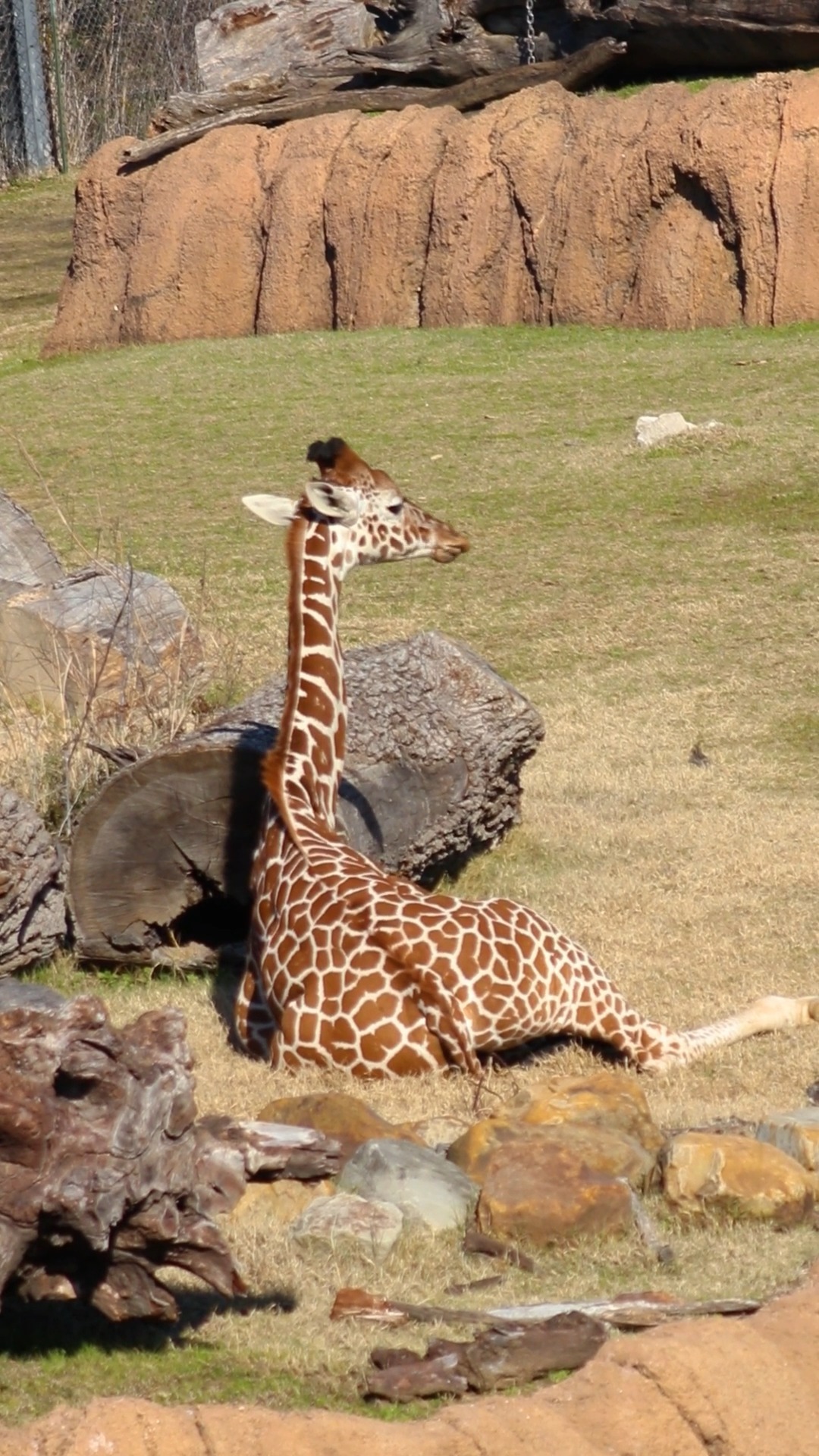- The significance of slowing down even for large animals like giraffes and its impact on their health and behavior.
- An exploration of giraffe physiology and how their unique features influence their daily activities and rest patterns.
- The role of zoos in providing suitable environments for giraffes that accommodate their need for rest and recuperation.
- Insights into wildlife conservation efforts focused on giraffes and how understanding their need for rest is pivotal to these strategies.
- The impact of public awareness and education on giraffe conservation, shaped by social media and digital content.
Slowing down is not a concept that’s exclusive to humans. It applies to every living creature, including the tallest ones on our planet—giraffes. Giraffes, with their serene appearance and graceful stature, are iconic animals that draw fascination across cultures and generations. Even these towering giants require moments of pause, which are vital for their health, well-being, and survival, both in the wild and in captivity. Understanding why Saturdays, or any other day meant for slowing down, are crucial for them reveals much about their physiology and habits.
Giraffes are remarkable creatures, with physiology finely tuned to their environment. Their long necks and towering height, reaching up to 18 feet, give them a vantage point unmatched in the animal kingdom. This height is advantageous for reaching high foliage but demands a unique adaptive system, especially in terms of blood circulation. Giraffes possess a powerful heart, weighing over 11 kilograms, capable of generating double the blood pressure of a human heart. This immense pressure ensures blood reaches their brain, even at such heights. However, this system requires periods of rest to prevent exhaustion, highlighting the importance of slowing down.
Rest is integral in giraffes’ day-to-day lives. Contrary to popular belief, giraffes do indeed sleep, though not for long periods. In the wild, giraffes typically sleep for less than five hours in a 24-hour period, often in short naps that generally last only a few minutes each. Despite their size, they are prey animals and remain vigilant even while dozing, which is a testament to their capability of adapting to survive. Their sleep cycles are fascinating, with REM sleep occurring in brief bouts. Lowering their heads to the ground is a rare occurrence, often avoided unless they feel entirely secure. Understanding these patterns is crucial for wildlife conservation and zoo management.
Zoos play a critical role in providing environments that cater to these needs. Facilities must be designed to offer space, safety, and enrichment catering to giraffes’ behavioral and physiological needs. For giraffes in captivity, rest is facilitated through carefully managed enclosures where they feel safe enough to let their guard down. Proper dietary planning, enrichment activities that mimic the challenge of foraging in the wild, and scheduled downtime without human interaction are vital components in zoo management for giraffes. Such practices ensure that these majestic animals can lead healthy lives that simulate their natural habitat as closely as possible.
Conservation efforts for giraffes have gained significant momentum in recent years, driven by the stark decline in giraffe populations due to habitat loss, poaching, and ecological changes. NGOs and conservation programs have underscored the importance of understanding giraffes’ biological and environmental needs, including their rest patterns, as part of preserving their populations. Satellite tracking and field studies have revealed that giraffes have unique ranging patterns and require large areas to roam, findings that have emphasized the need for protected reserves. These efforts are supported by studying their behavior during rest periods, offering insights crucial for managing wildlife reserves and breeding programs.
Raising awareness about giraffes’ need to slow down is enhanced by platforms such as Instagram, where content featuring these animals, like the mentioned reel, brings their world closer to ours. This visual connection fosters a deeper understanding of their habits and challenges facing these gentle giants. Digital content serves as an effective tool in educating the public about wildlife conservation and the significance of individual species, influencing positive attitudes towards conservation efforts. Such awareness is integral to building global efforts focused on habitat preservation and sustainable coexistence with wildlife.
In light of this, ensuring Saturday or any day of rest for giraffes in captivity and the wild enables them to thrive. This reflection on their need for downtime prompts a broader discussion about animal welfare and the human role in conserving biodiversity. By appreciating the importance of these moments of pause for giraffes, we can reevaluate our understanding of wildlife conservation and work towards more effective, sustainable practices. Understanding and acknowledging the necessity of slowing down—even for the tallest creatures—enables more profound insights into preserving our natural world.
*****
Source Description
Saturdays are made for slowing down — even for the tallest ones around. 🦒


